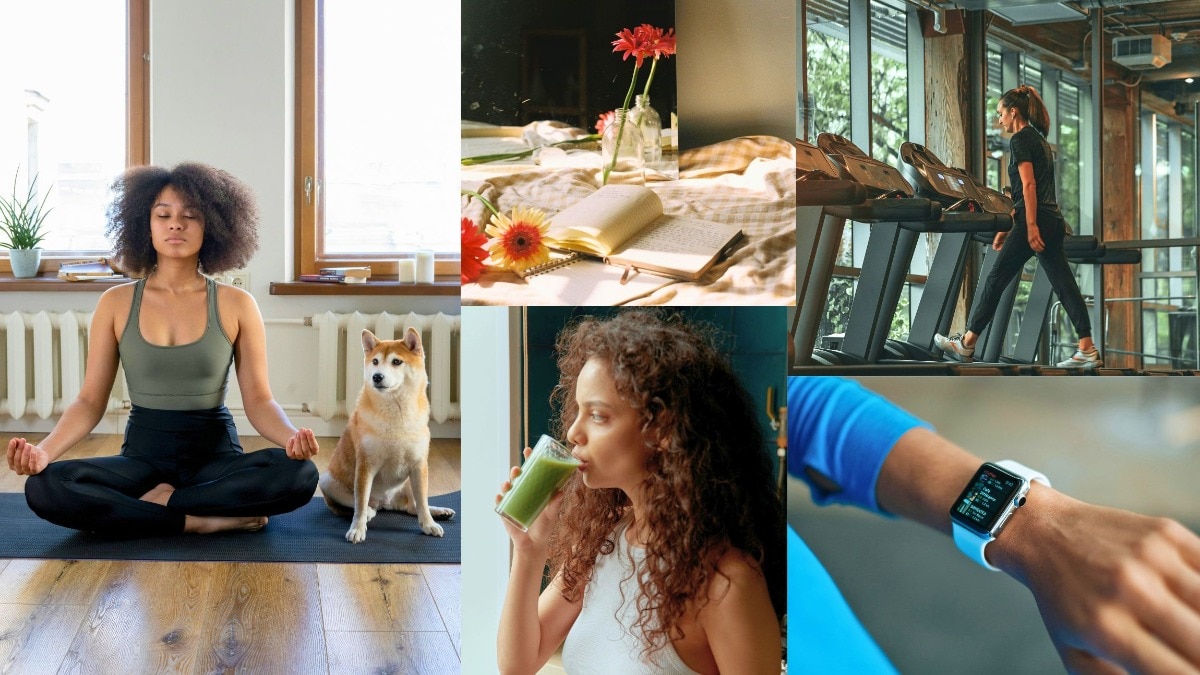Why waking up at 6 am, journaling, and lifting weights is the new going out
Everyone is on the grindset. Are you down to join?

Somewhere between a pandemic, a global mental health crisis, and the never-ending doomscroll, we traded tequila shots for turmeric shots. The grindset lifestyle—where 6 am alarms, strength training, and journaling routines reign supreme—has quietly replaced the chaos of the club. Yes, it’s 2025, and wellness is the new wild night out.
The rise of the wellness hustle
These days, it feels like everyone has a routine that rivals that of a professional athlete. There’s the sunrise gym session, the cold shower, a few drops of magnesium in water, protein oats, then off to work—often with a matcha in hand and an aura ring on the finger. Everyone’s grinding, but with a green juice twist. Even social plans have shifted. Instead of Sunday brunch, it’s a weekend hike. Dinner is now grilled chicken and veggies, not greasy fries and cocktails. And don’t even think about texting anyone past 10 pm, they’re already asleep, so they can clock in 10k steps before you’ve opened your eyes.
Gen Z: The swolest generation?
We’re looking at a generation that is possibly the most health-conscious in history. According to a McKinsey report, Gen Z and millennials are spending more on wellness products and services than older generations. They’re not just working out to feel good; they’re doing it to look good, too. In fact, a study with Gen Z participants revealed that nearly half of the respondents said “improving their appearance” is a key reason they work out.
But this isn’t just vanity. Gen Z grew up with FitTok—TikTok’s fitness-focused subculture that’s now racked up over 64 billion views, making information about wellness and nutrition easily accessible from a young age. Unlike millennials, who discovered green smoothies in their 20s, Gen Z entered adolescence already knowing the difference between creatine and collagen. That kind of exposure creates both motivation and pressure.
Gymfluencers, gadgets, and the new social circle
Today’s influencers are moving well beyond fashion hauls; they’re gymfluencers breaking down their RPE (rate of perceived exertion) during squats, or recommending gut-friendly recipes with chia seeds and kefir. Health gadgets have become part of the aesthetic. Ultrahuman patches, whoop bands, and aura rings aren’t just for tracking metrics, they’re low-key flexes, worn like digital wellness jewellery.
And as people seek out third places beyond work and home, gyms and fitness studios have become hubs of connection. Group workouts are the new mixers, where you’re more likely to make a friend mid-bootcamp than at a bar. There’s a quiet intimacy in sweating side by side with strangers, and it’s proving to be a powerful antidote to loneliness.
So is it all good?
While this shift is rooted in empowerment, it’s not without its downsides. The pressure to keep up, to always be improving, to build the “perfect” body, mind, and lifestyle can be exhausting. What started as a push for self-care sometimes morphs into an obsession with optimisation. Still, if done mindfully, this wellness wave might just be the healthiest “hustle” culture we’ve seen yet. Because if being “that girl” means prioritising your health, waking up early, and smashing goals before breakfast, maybe I’m ready to join the grindset too.
Also read: Friendship red flags are real—and no, you're not being dramatic
Also read: Shop, savour, and stroll through the dynamic and diverse streets of Washington, DC
more from Life

Why 'Heated Rivalry' has everyone hot, bothered, and obsessed

Regal revivals, fashion shake-ups, and everything new we’re obsessing over this month

When is the new season of 'Euphoria' out? Plus 5 things we know about it

How Aldo became one of the hottest footwear and accessories brands in India

Four photographers on why a good photograph is more than just a good camera

Why writers are side-eyeing ChatGPT (even as they keep using it)

Which 2025 pop culture moment are you?

Eight cities, eight stories—check out where India’s matcha lovers get their fix

Have you found true love this cuffing season or are you just “winter coating” for the holidays?

The Cosmo-approved holiday beauty list to help you glow through party season
